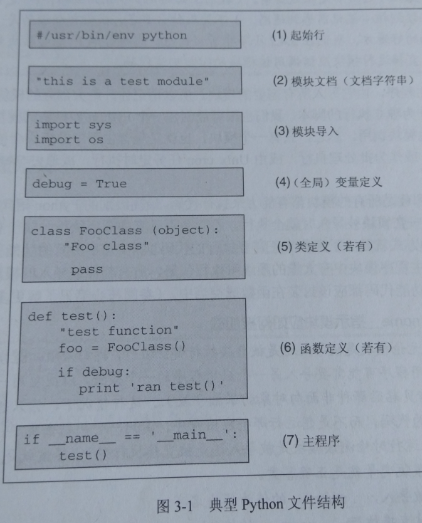转自:https://blog.csdn.net/u011511601/article/details/53504355
Python使用缩进对齐组织代码的执行,所有没有缩进的代码,都会在载入时自动执行。每个文件(模块)都可以任意写一些没有缩进的代码,并在载入时自动执行。为了区分 主执行代码和被调用文件,Python引入了变量:__name__。
1)当文件是被调用时,__name__的值为模块名;
2)当文件被执行时,__name__的值为 ‘__main__’。
基于此特性,为测试驱动开发提供了很好的支持,我们可以在每个模块中写上测试代码,这些测试代码仅当模块被Python直接执行时才会运行,代码和测试完美的结合在一起。
典型的Python文件结构

Python中的__name__举例

#hello.py def sayHello(): str="hello" print(str); if __name__ == "__main__": print ('This is main of module "hello.py"') sayHello()
python作为一种脚本语言,我们用python写的各个module都可以包含以上那么一个类似c中的main函数,只不过python中的这种__main__与c中有一些区别,主要体现在:
1、当单独执行该module时,比如单独执行以上hello.py: python hello.py,则输出

This is main of module "hello.py" hello
可以理解为"if __name__=="__main__":" 这一句与c中的main()函数所表述的是一致的,即作为入口;
2、当该module被其它module 引入使用时,其中的"if __name__=="__main__":"所表示的Block不会被执行,这是因为此时module被其它module引用时,其__name__的值将发生变化,__name__的值将会是module的名字。比如在python shell中import hello后,查看hello.__name__:

>>> import hello >>> hello.__name__ 'hello' >>>
3、因此,在python中,当一个module作为整体被执行时,moduel.__name__的值将是"__main__";而当一个module被其它module引用时,module.__name__将是module自己的名字,当然一个module被其它module引用时,其本身并不需要一个可执行的入口main了。
